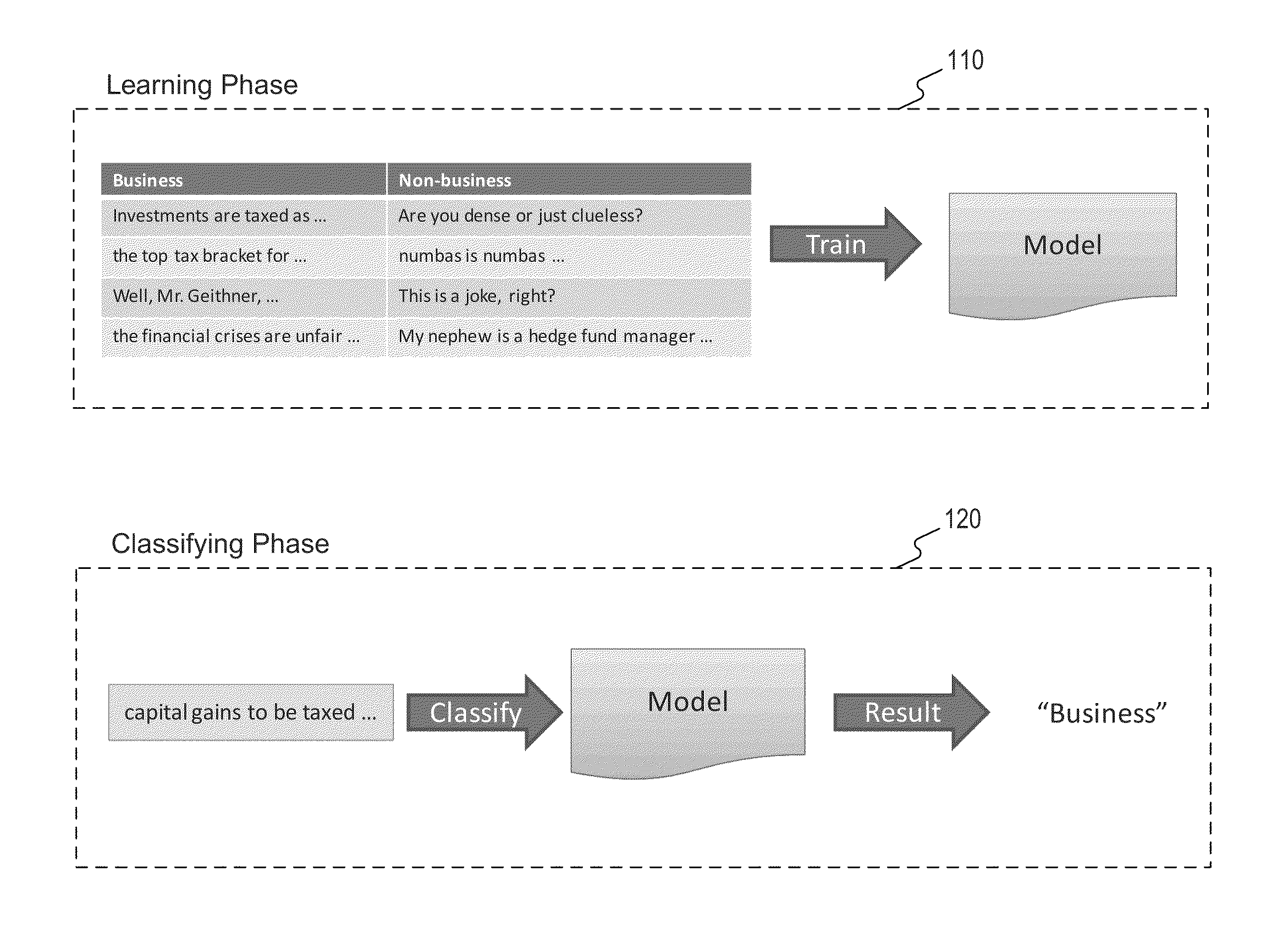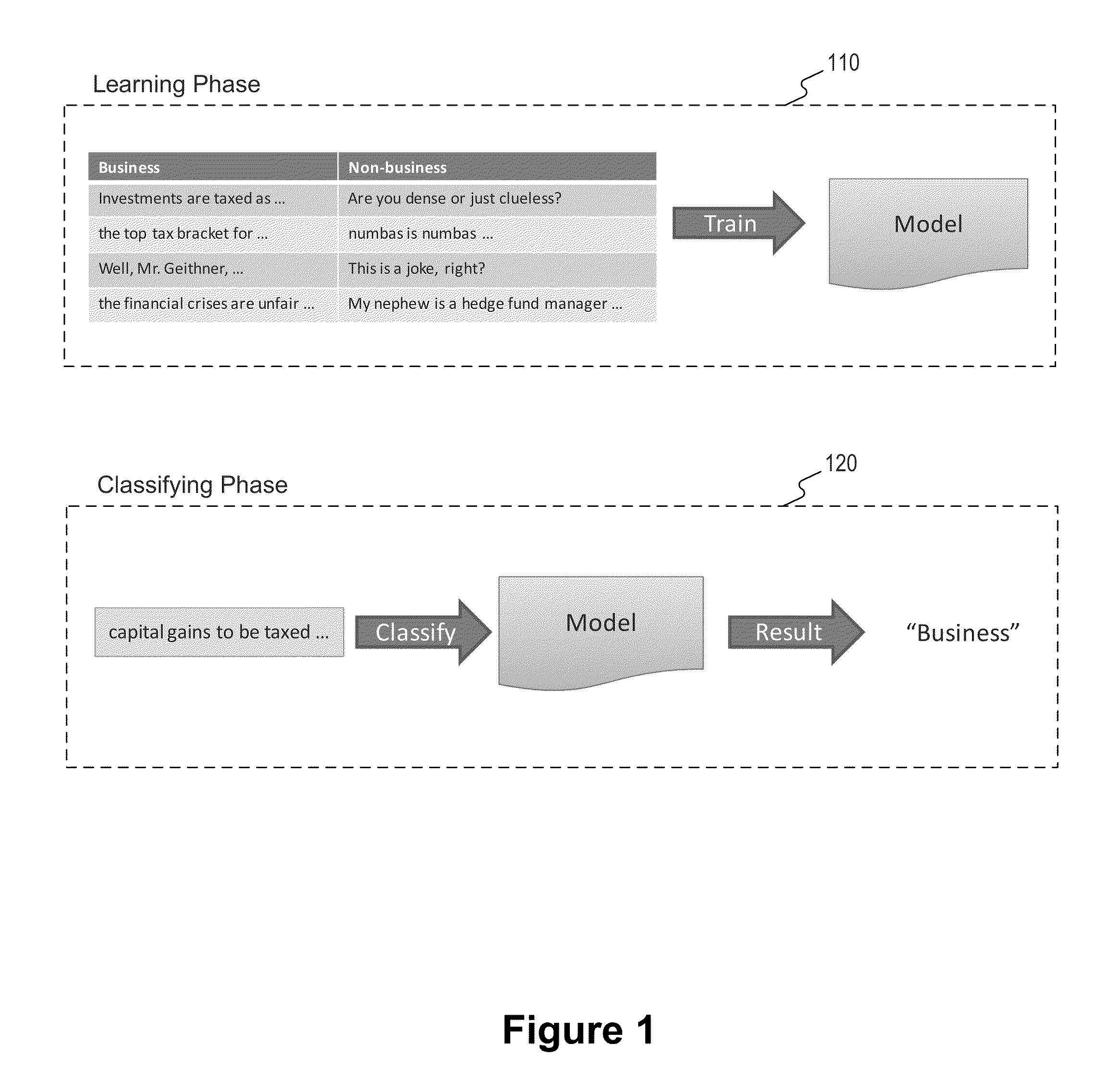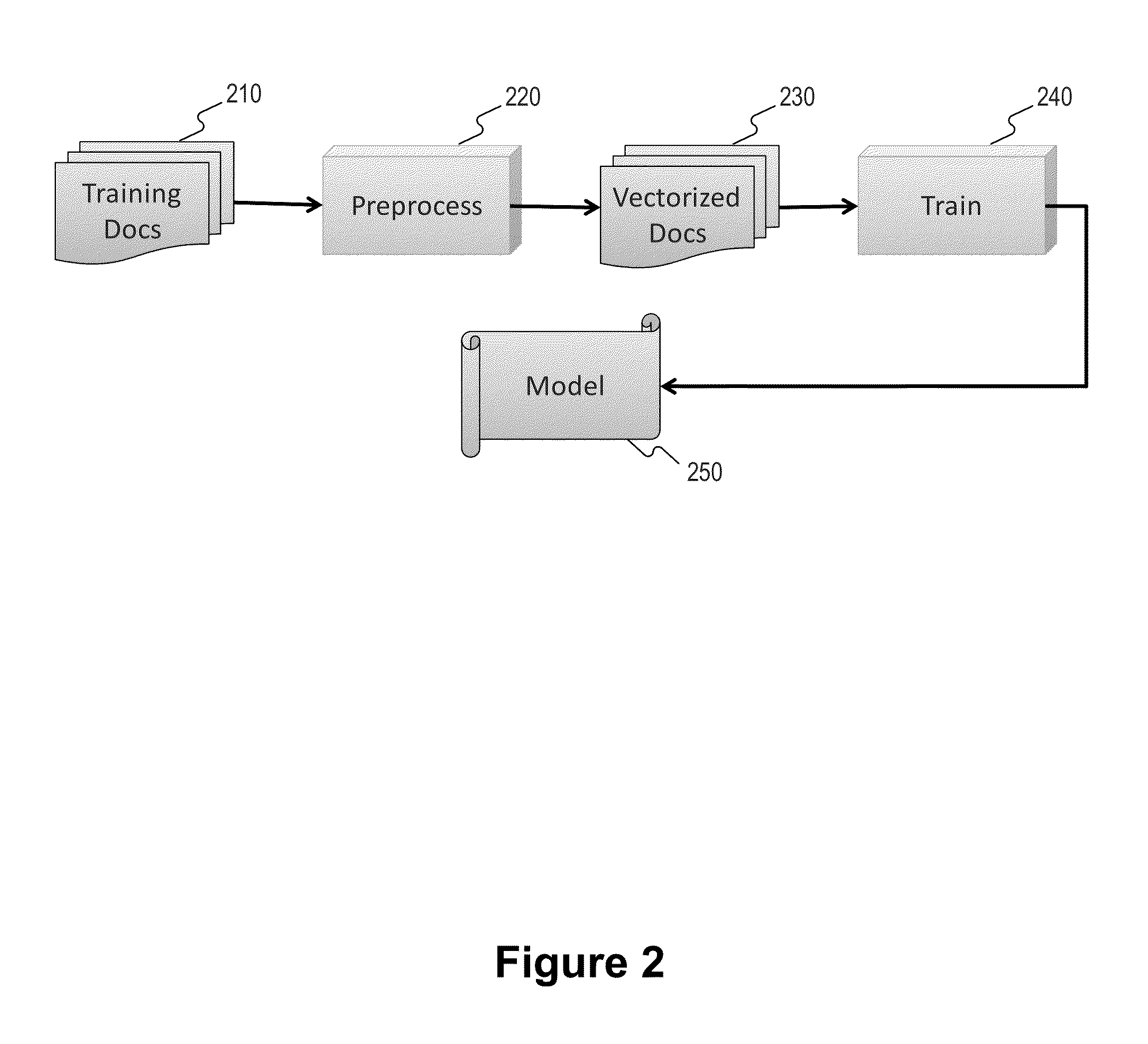Systems and method for performing contextual classification using supervised and unsupervised training
a technology of contextual classification and system, applied in the field of content assessment and computerized systems and methods for performing contextual classification of objects, can solve the problems of reducing the utility of classification, time-consuming manual tagging of objects, and manual classification taking
- Summary
- Abstract
- Description
- Claims
- Application Information
AI Technical Summary
Benefits of technology
Problems solved by technology
Method used
Image
Examples
Embodiment Construction
[0023]Reference will now be made in detail to the exemplary embodiments implemented according to the disclosure, the examples of which are illustrated in the accompanying drawings. Wherever possible, the same reference numbers will be used throughout the drawings to refer to the same or like parts.
[0024]As discussed above, prior methods of contextual classification have relied primarily on manual classification of objects. Specifically, prior methods have required content providers to task personnel with analyzing and classifying content according to specified criteria. This sort of manual classification of content can also be referred to as “supervised” classification. Although supervised classification of objects can suffer from certain inefficiencies (e.g., time-consuming, costly), supervised classification can also provide certain benefits. Perhaps the biggest advantage of supervised classification of objects is accuracy or reliability of classification. Content providers that e...
PUM
 Login to View More
Login to View More Abstract
Description
Claims
Application Information
 Login to View More
Login to View More - R&D
- Intellectual Property
- Life Sciences
- Materials
- Tech Scout
- Unparalleled Data Quality
- Higher Quality Content
- 60% Fewer Hallucinations
Browse by: Latest US Patents, China's latest patents, Technical Efficacy Thesaurus, Application Domain, Technology Topic, Popular Technical Reports.
© 2025 PatSnap. All rights reserved.Legal|Privacy policy|Modern Slavery Act Transparency Statement|Sitemap|About US| Contact US: help@patsnap.com



